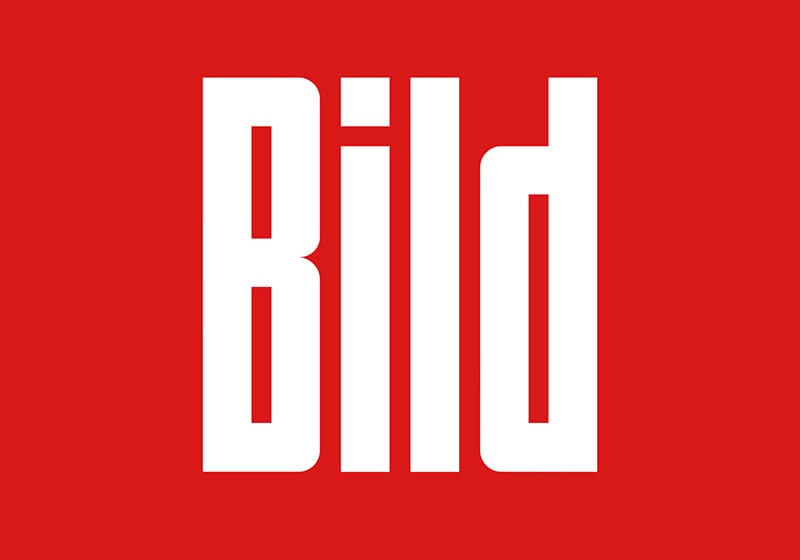Table of Contents
Sensationalist and irreverent journalism, which sometimes oversteps the limits of politeness and good taste, is always popular with readers. If you want proof of this, look no further than Germany’s best-selling daily newspaper, and one of the most successful in Western Europe: Bild-Zeitung, or Bild for non-Germans.
With a current circulation of over 800,000 copies – admittedly far short of the paper’s 1990s glory days, when it sold over 4 million copies a day* – the right-leaning paper remains one of the most listened-to voices in Germany.
One of the newspaper’s strengths is its ability to shock and make an impression on people: its readers want to scandalised, enraged and amazed on a daily basis.
In this article, we’ll take a look at how the graphic design helps the paper achieve these objectives.
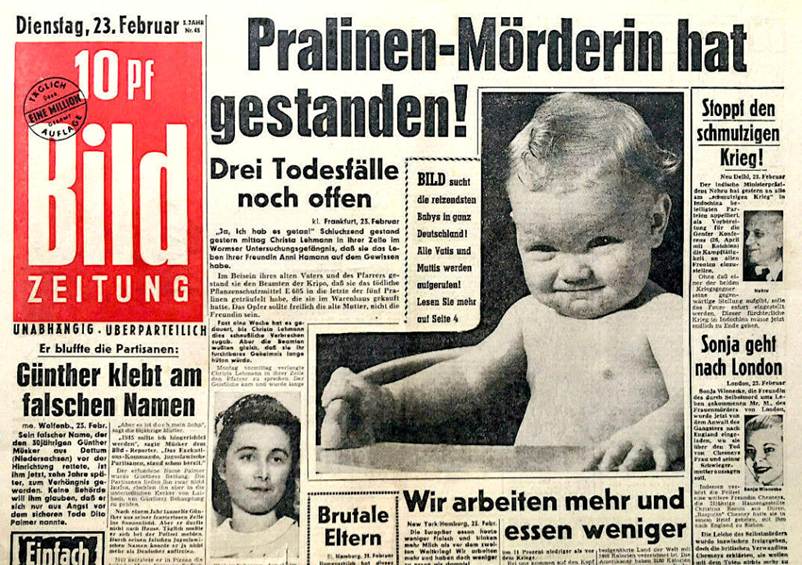
A ‘boulevard’ newspaper
In German, tabloids are known as ‘boulevard’ newspapers. They got this name because copies were sold not from kiosks or on subscription, but by newspaper hawkers, who would shout sensationalist headlines on the streets to ensure the newspapers were literally snatched from their hands.
Nowadays, vending machines do this job instead.
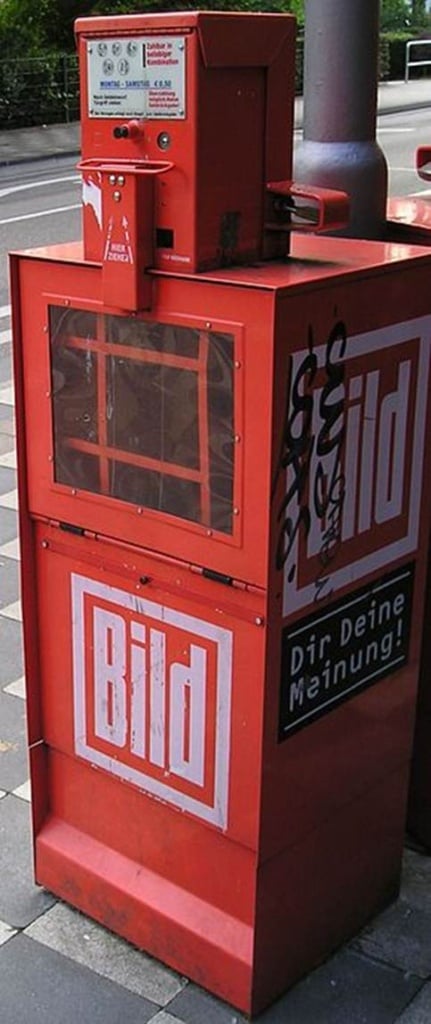
Die Bild was founded in 1952 as a low-cost publication full of gossip, images and comics: a paper made for the mass market, which only occasionally delved into politics, focusing mostly on news, tittle-tattle and sport, inspired by the UK’s tabloids, and particularly the Daily Mirror.
Bild became successful in the 1960s, increasing both its readership and its economic and political influence in Germany during the period of the country’s economic boom and the building of the Berlin Wall.
In the late 1960s, the newspaper took a very hardline position on the student protests that were sweeping Europe, leading to a violent escalation. The majority of intellectuals sided against Bild, causing a significant drop in sales.
The paper faced accusations of bad journalism throughout the 1970s, and although its sales later recovered, it continued to use scandal and hype as the basis of its business model.

Striking graphics
This type of newspaper relies on simple, solid and easily visible graphics that constantly scream from newsagents’ shelves.
The white on solid red logo may be inspired by its equivalent in the UK, the Daily Mirror, the original tabloid newspaper. The name Bild-Zeitung translates as ‘illustrated newspaper’, which immediately tells readers they will not be subjected to overly long or complicated articles.
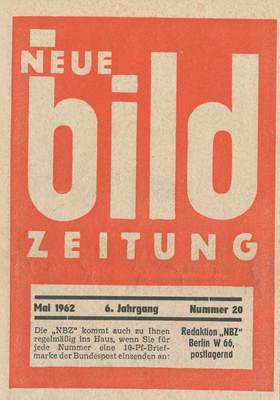
The Bild logo in 1962: https://www.ddr-museum.de/de/objects/1010911
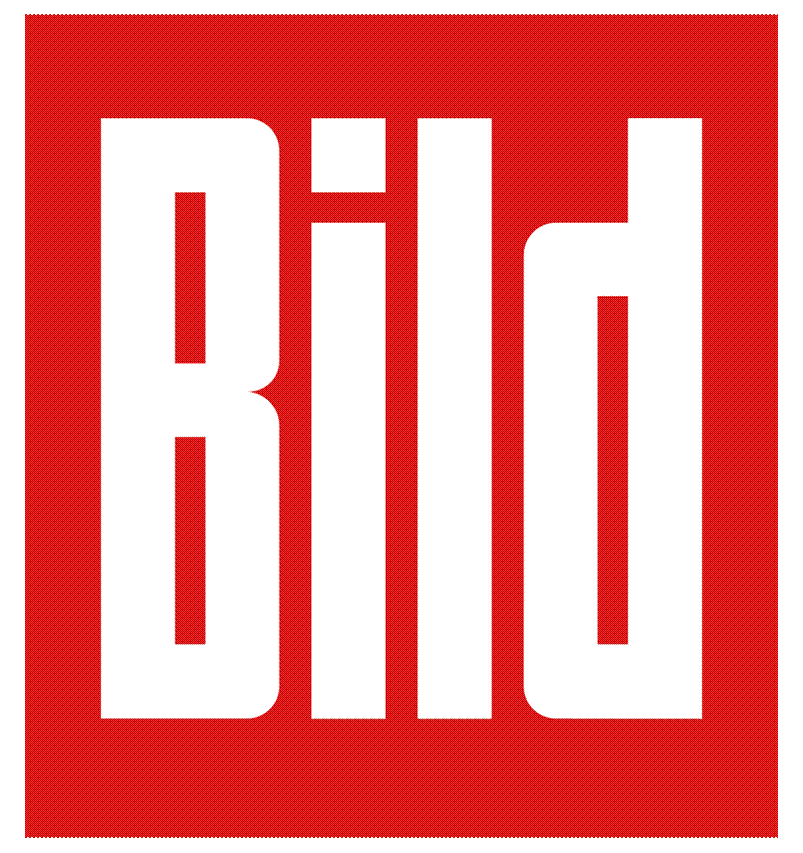
Throughout the paper’s history, the front page has always been based on a striking headline, which sometimes appears in a dark-coloured box, or in front of a photo. The part that needs to be emphasised is always kept in the top half of the page, so it remains visible when folded.
The paper uses a variant of the broadsheet format called nordisch, with dimensions of 376 x 528 mm. It is interesting to note that this is bigger than most traditional tabloids, which have always used a smaller and more easily manageable format (the ‘tabloid’ format, of course!) Perhaps the large page size stems from Bild’s street-hawking origins and the need for the paper to be grabbed easily by passers-by.
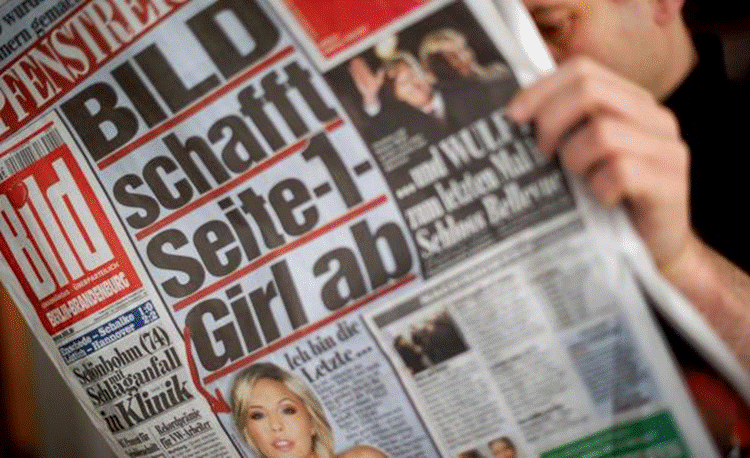
Solid fonts and few innovations
Bild’s standard font is Helvetica Inserat, a variant of the famous font with just a few small alterations made to certain letters. The logo uses the same font, but with some changes introduced by the newspaper’s graphic designers. The large font size and use of bold scream the titles out without caveats, just as the paper intends it, even when the stories’ sources are still a little sketchy.
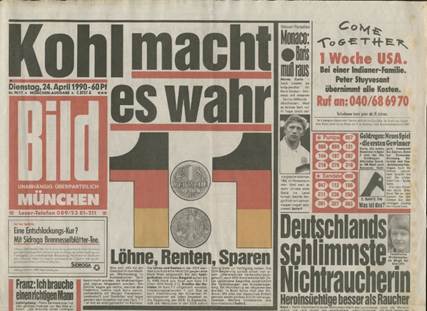
Unusually, a sans-serif font is also used for the smaller text, to emphasise the difference between it and papers that are more densely packed with news. That said, a more traditional Times New Roman font has been brought back for certain articles and headlines.
Bild’s front page is not exactly elegant; the modular structure of the spaces varies depending on how many scoops or eye-catching headlines the newspaper contains that particular day. In recent years, gaudy coloured boxes (either brown or blue) have also been added to the page, increasing the kitsch effect.
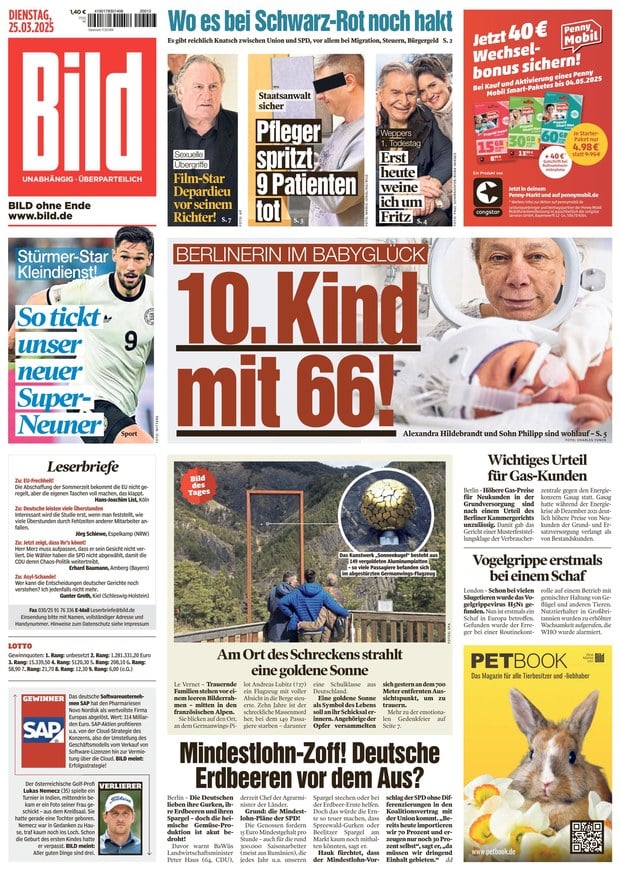
Inside there are no innovative solutions, no modern infographics, and no illustrations apart from cartoons, caricatures and basic graphics.
The photos are cropped in a way that emphasises the drama, and the colour contrast is ramped up to achieve the same effect.
Photographs of well-known personalities are often used in prominent positions to attract attention.
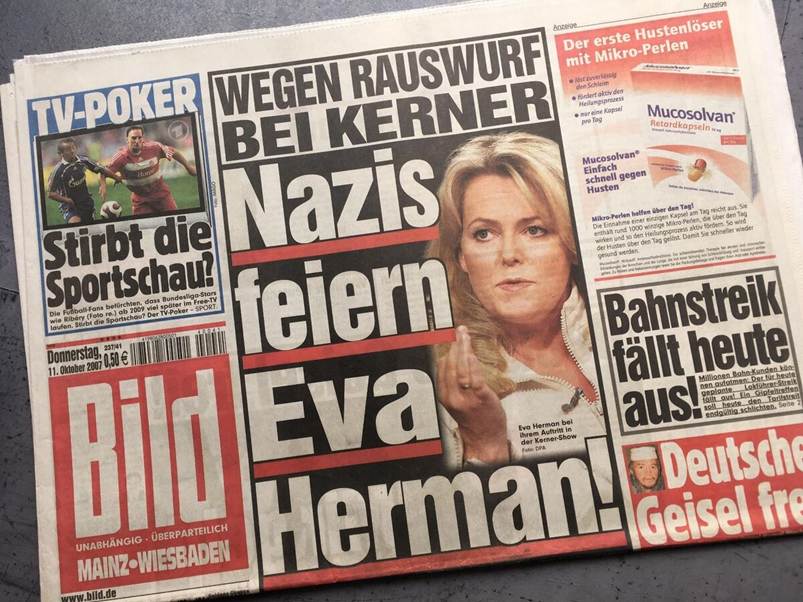
An attention-grabbing newspaper
In conclusion, Bild, Germany’s bestselling daily paper, is built around the concepts of visual immediacy and emotional impact, making widespread use of photographs and seeking to catch readers’ attention with huge headlines and strong colours (with red and black the publication’s particular favourites). This design, combined with its aggressive journalism, makes it one of the most recognisable tabloids in the world.
Its graphic design is simple and direct, without anything sophisticated or innovative, but nevertheless it successfully grabs readers’ attention: everything is uppercase, large-scale and contrasting. Which is precisely how the paper views the world.
*Data source: https://de.wikipedia.org/wiki/Bild_(Zeitung)#Die_1990er-Jahre

